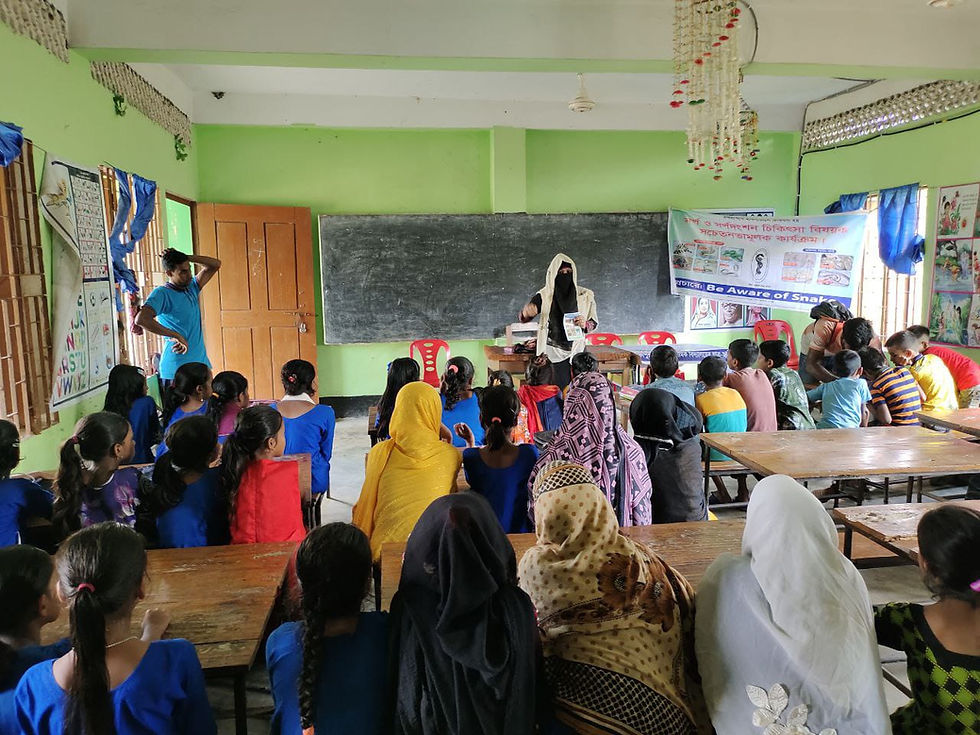The Need to Talk about Gender in Wildlife, Environment and its Conservation
- Symrna Darkmorph

- Jun 27
- 3 min read

We all depend on nature, plain and simple. Whether it's the food we eat, the air we breathe, or the calm we find in a forest, nature's gifts support everything from our daily lives to our deepest beliefs.
But here's where it gets really interesting: our individual identities profoundly shape how we connect with nature.Think about it—the ways we rely on, benefit from, and interact with the natural world are incredibly diverse. Your unique background, experiences, and who you are all play a part in this.
For instance, gender is a hugely important part of our identity, and it significantly influences how we experience and use nature's resources. These differences highlight the rich and varied relationships people have with our planet.
So, while nature is undeniably essential for everyone, the story of how we connect with it is beautifully unique to each of us, woven into the very fabric of our identities.
Why do we need to talk about gender in Wildlife, Environment and its Conservation?
From the time we're very young, boys and girls often learn different expectations about their roles in the world. In many places, for example, women are often expected to do most of the unpaid work at home, like cooking and caring for family. Men, on the other hand, are often expected to be the main providers of money for the household.
These kinds of expectations and roles can lead to gender inequality, meaning that people are treated differently or have different opportunities just because they are a boy or a girl.
According to the IUCN Academy, and I quote, “In developed countries, there are more women than men graduating from university, yet they only represent a third of graduates in science, technology, engineering and mathematics (STEM) degrees (OECD, 2022).”
As I took part in IUCN Academy's An Introduction to Integrating Gender in Environmental Programming Course, I was surprised to learn about women farmer's "Same Size" Problem: If you compare farms of the same size, women's farms produce about 24% less than men's. This gap is due to women having less access to things like education, farming tools, technology, and facing discrimination.
As I went through the course, I was able to understand how women are dispropotionaly affected by Biodiversity Loss, In particular, the indigenious women who possess knowledge of ecosystems and species.
A study in Brazil found that women were able to identify 238 plant species compared to 229 by men – and they also shared this knowledge more widely (Vieira Da Costa et al., 2021).
-IUCN Academy course on Integrating Gender in Environmental Programming
Even though women often know a lot more about plants—how to gather them, grow food, and use them for medicine—their contributions aren't fully recognized or utilized. This mirrors a worldwide issue where women frequently face obstacles when trying to get involved in the biodiversity sector.
what made me excited to know was that in Madagascar, including women in mangrove restoration, from which they were previously excluded, improved protection and planting rates by 95% (Seager, 2021).
and it was absolutely shocking to know that At current rates, it will take 162 years to achieve gender equality in environmental ministries.
So why does it matter who sits at the table?
Having a wide range of perspectives at every level leads to better results for climate change and conservation efforts. When women are part of decision-making, it can be crucial for solving conflicts related to nature and reaching our environmental goals.
When we don't consider what women need and their responsibilities, it can directly hurt them. They might be forced to choose between feeding their families and making a living or helping with conservation. Ultimately, this choice often means conservation efforts fail.
Overall, this course helped me understand why it's important to conduct a gender analysis prior to programming for the environment and the risks that a gender-blind approach may lead to.





Comments